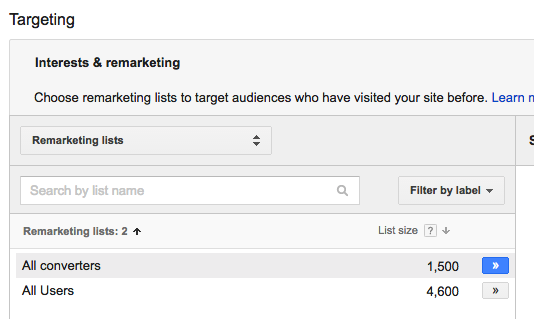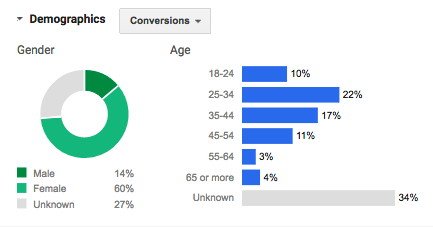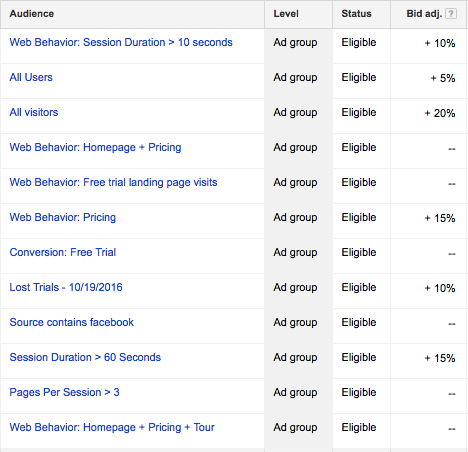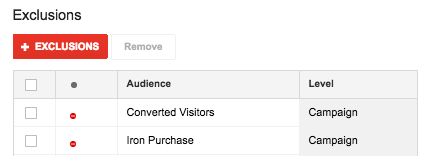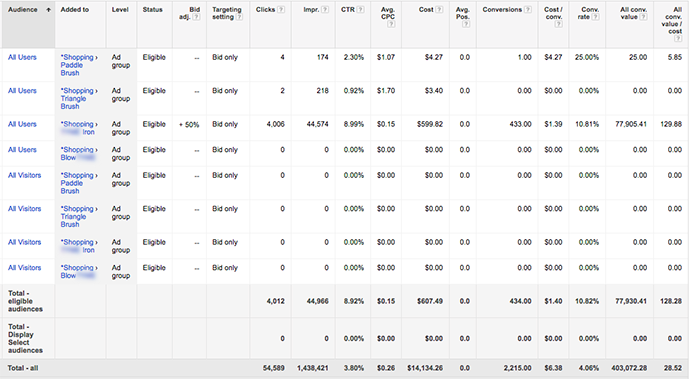RLSAs (Remarketing Lists For Search Ads) are the perfect combination of classic remarketing and the high conversion intent of paid search.
Now, anyone who knows anything about Google Ads (or any search advertising in general) knows that remarketing is one of your most powerful tools. It's one of the most effective targeting methods for increasing your conversion volume and conversion rates. How so?
By serving up ads and offers to users who have previously interacted with your website/brand.
But, as I said above, remarketing isn't restricted to just the Google Display Network anymore. Nowadays, RLSAs (you like that rhyme?) allow you to combine the retargeting powers of classic GDN retargeting with the high CTRs, conversion rates, and purchase intent of Google Search.
In this ultimate guide, I lay out 11 tactics you can use to make the most of the Google Search Network by using RLSA.
Get brand new Google ad strategies straight to your inbox every week. 23,739 people already are!
What is RLSA?
Here’s how Google defines RLSA…
Remarketing lists for search ads (RLSA) is a feature that lets you customize your search ads campaign for people who have previously visited your site, and tailor your bids and ads to these visitors when they're searching on Google and search partner sites.
You can think of RLSA like a nightclub guest list that allows you to let in the “desirables” and keep out the “undesirables”.
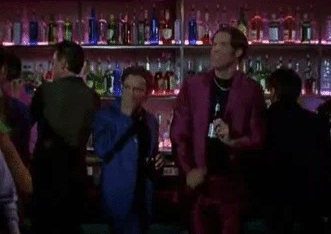
Side note: If you’re not a fan of “Night at the Roxbury,” you’re in for a long blog post.
Why Should You Care About RLSA
So why bother with Remarketing Lists For Search Ads? I mean, even the name alone is long and tiresome.
Well, according to a certain ComScore study, retargeting was found to be the best targeting method to improve the lift of marketing results compared to other targeting methods (such as keyword and topics targeting).
The average lift was 1046% (and no I didn’t forget to add a decimal point).
So, knowing that retargeting is one of the best techniques you can use to lift your campaigns, why would you choose to only use retargeting on the Display Network? You should use retargeting on ALL of your existing campaigns - especially the ones that often drive you the most closed conversions.
Why are search users more active and conversion ready than display network audiences? Well, just think of it from your own perspective. When are you more likely to convert or something:
- When you're on some random site and you're hit with a retargeting ad in the GDN, possibly a banner on the side of an irrelevant comic book forum.
- OR when you're actively typing in the product name into Google for some comparative shopping.
That second option is a far greater conversion likelihood, (aka hotter traffic temperature) than the first. And when you add the super fuel of retargeting's customization into the equation, it becomes super-hot.
Getting Ready for RLSA
So, before we dive into RLSA there are a few things you need to keep in mind from a technical perspective. Not only that, there are a few performance benchmarks you need to hit before even being able to use RLSA.
Here are the basic RLSA requirements:
- A remarketing list requires at least 1,000 cookies before it becomes active.
- You can use remarketing list or customer match email address lists.
- The membership time limit for these lists is capped at 540 days.
- You can decrease your bids by as much as 90% or increase them by 900%.
- If a searcher is in two remarketing lists, Google will use the higher bid.
- Similar to Display Network, you can do “target and bid” or “bid only.”
Know Your Audience Before You Start
Just like with any marketing tool or tactic, it needs to start with strategy. Make sure you understand your target audience and the funnel steps they travel through before converting, and even after converting. It helps to have your customer journey mapped out to know who you are targeting and when you’re targeting them.
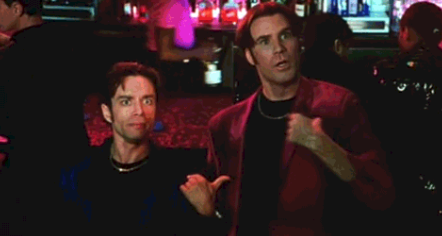
Setting Up Your Remarketing Lists For Search Ads (RLSAs)
Now that you know the importance and basic strategies behind how RLSAs work and who/how they target, it's ime to get into the nitty gritty of setting these bad boys up. This is where the technical setup in Google Ads is important. With RLSAs - as is the case with most remarketing campaigns - you heavily rely on proper setup for proper execution.
To set up RLSA, first make sure that you have remarketing audiences created. Then, select your search campaign or select an ad group.
Then, select interests and remarketing at the ad group or campaign level and choose your lists.
Best Tactics for RLSA
The following are several RLSA tactics you can use for maximum effect. You may not be able to use all of them on every campaign but this should give you a few ideas of how to increase the performance of your campaigns. :)
1. Compete for Broad Terms
This is the most basic RLSA tactic. Some broad terms may have lots of competition and be expensive, or have lots of non-qualified traffic. Using RLSA, you can place low bids on broad search terms. Then, increase your bid modifier when you can know the audience has been on your site before and is more likely to convert.

We have a client that is competing for the broad term “Customer Management” and by using RLSA, we will only increase the bid if a visitor had been on the site before. This way, we only achieve top rankings if a conversion is more likely and not have to pay out as much ad spend for more general/colder traffic.
Read more about PPC traffic temperatures here.
2. Demographic Targeting
So, it’s not just the Display Network that allows you to target your ideal demographics of age and gender. When users are logged into Google, we’re able to target demographic information--so you can adjust your bids up for your ideal audience, or adjust down based the age or gender that doesn’t fit your ideal buyer.

This client had a product that mostly appealed to female customers.
So, we increased our bids for females that are between 18-54 and negative bid males and women over 55.
You will almost always have a percentage of “unknown visitors,” but being able to optimize the majority of your traffic by age and gender is a no brainer.
Learn more about targeting for demographics and other criteria here.
3. Turn Up The Heat
As a visitor gets closer and closer to conversion, it makes sense to increase your bid modifiers. You may have search terms that are more in the consideration/research phase. Then, as the user continues to come back to your site multiple times, or for longer durations, or shows conversion intent. Increase your bids as you push closer to that conversion.
“First Time Users”
New Sessions
Increase Bid 10%
“Consideration”
90+ Seconds On Site
Increase Bid 15%
“Ready to Convert”
Clicked ‘Get Demo’
Increase Bid 20%
Here are some audiences where we would increase our bid adjustments as a visitor comes back to the site multiple times, and shows behaviors that get them closer and closer to conversion
You should experiment with different keywords and remarketing lists. While you can make an educated guess about what will lead to conversions, you should always follow the data. The basic idea, however, is to increase your bids as a visitor gets closer and closer to conversion.
4. Message Matching
Potentially, you want to use specific ad copy wording based on how users have interacted with your website. Create a remarketing tag based on the behavior or stage of your visitor. Then, use a bid modifier within an ad group to show more relevant ad copy text to that searcher.
For example, if you have a visitor that took a look at your pricing or product page, you could use RLSA to target them with an ad that mentions a discount. On the other hand, if they looked at a specific feature of your services, you can show ads that elaborate on the benefit of that feature.
Leading footwear manufacturer Clarks used message matched retargeting to increase their ROAS to 6x.

Read more on ad and landing page message match here and here.
5. The Bouncer
You don’t always have to bid up. Potentially, you want to use negative bids of exclusions to keep the wrong type of audience out, or prevent them from clicking on your ads.
For instance, a user that clicked on your ad, and then bounced from your site very quickly, isn’t likely to convert. You may have email subscribers or unqualified leads that you wouldn’t expect to convert on your ads either. Exclude or negative bid them to prevent wasted spend.
Let’s say you have a support page that people are trying to find or they are logging into a SaaS platform. On the Search Network, these visitors may click on your branded ads costing you money. For these visitors that are already existing customers, you can negative bid adjust them--so you don’t have to waste your ad dollars.
If your business has mostly one-time buyers or converters, you can also exclude converters from your search campaigns, saving your ad dollars as show below:
6. Competitor Terms
Similar to the broad terms tactic, you can also target your competitor's branded terms on search. Then, use RLSA to only show ads when visitors have been on your website before and are clearly doing some comparison shopping.
Just keep in mind, once you start targeting competitors terms, they might start bidding on your branded terms as well. But hey, competition is normal in a free market :)
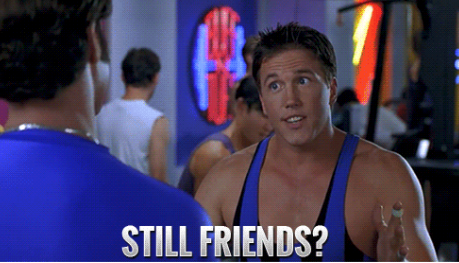
7. Shopaholics
RLSA on shopping campaigns allows you to be more tactical about how you bid on searchers that have been on your site before or have shown interest in particular products. You may be willing to pay a higher bid for users that have abandoned their shopping cart or showed interest in high value items.

Ulmart saw positive performance improvements in less than a month. They observed that 26% of their conversions were going through RLSA, and had an impressive conversion rate of 6.57% compared to 2.51% for new visitors. RLSA enabled Ulmart to bid more intelligently on returning visitors and benefit from their 73% average lower cost-per-order.
Below is a look at another client who had a 128.28 ROAS vs a 28.52 ROAS on their shopping campaign.

8. VIP Only
By using “Target and Bid,” you can technically show your search ads to ONLY searchers that have a retargeting cookie on them. This is a way to have super targeted clicks on the Search Network. However, it does mean excluding ALL other searchers, which will massively reduce your impressions.
A clever way to use this tactic is to supplement your low impression volume with lots of cheap social traffic. You can send that social traffic to your pages. Then, use the remarketing tag to show RLSA ads to just your ideal audience, even for broad terms.

Learn more about bidding options in AdWords here.
9. RLSA + DSA = RLSADSA?
A DSA (Dynamic Search Ads) campaign is great for broadening your keyword footprint and to bring in more traffic. However, the traffic that may end up clicking on your ad, may not even be your ideal audience or clicks could be expensive. Mix RLSA with your DSA campaign to only show DSA ads to visitors that are already familiar with your company.
Retailer Grainger used RLSA for their DSA campaigns and when combined, these two features have led to stellar results. Return on ad spend (ROAS), conversions, and click through rate (CTR) for the new ads all increased by nearly 1,000%.
One of our own clients used RLSA on their DSA campaigns. The RLSA audiences had a 13.83 ROAS vs cold traffic with a 2.05 ROAS.
A more advanced technique you can use is to create ad groups based on your RLSA lists. Then, use target and bid only to see what search terms your previous visitors are using. You can use this to gain insights into their post-visit searches.

10. Social + RLSA or RLSA Only
One tactic that will probably only apply to certain verticals with higher CPCs where there’s lots of competition and where conversion rates are challenging is to ONLY do RLSA and completely forget about unbranded search ads.
Then, you can use social media ads to increase the size of your remarketing pool. If your pool is bigger, the chances of getting more conversions is higher.
You can start off with social and then apply RLSA as well.
Just as you might increase bids for those who abandoned shopping carts or who purchased and you want to upsell/cross-sell to, you can also increase bids for users who convert in your Facebook audience. If a user shows a history of conversions, there’s a better chance they’ll convert again than a user who has never converted. At least, it’s a good hypothesis to test.
For example, an e-commerce dental supply website ran Facebook ads to find new customers who weren’t already aware or searching for their brand, they could collect data that could then be used in a remarketing list and applied as an RLSA bid adjustment on search campaigns.
Note: When you’re running initial campaigns in Facebook, you will want to set GA UTM tracking code with a label like “top converting,” so easy to pick out later when you set up a remarketing list based on traffic source matching that campaign.
So, if the user has converted via a Facebook ad AND is searching in Google for “dental supplies,” you could then remarket to those specific individuals.
Does this work for all brands? It probably has a better chance of success if you’re a brand that drives higher conversion volume from Facebook advertising.
Note: Bid adjustments stack, so there’s crossover that can impact bids across similar audiences.
11. The Journey Doesn’t End
In addition to Tactic #7, if someone has visited a purchase thank you page and thus, made a purchase, a retailer can bid on terms they normally wouldn’t--because they’re low profit margin, low cost products such as accessories to a device.
You create a search campaign with ad group including any potential search terms and phrases for upsells and cross-sells. You can then set up ‘Target and Bid,’ so the user being targeted has to meet both criteria: 1) they landed on the checkout completion page and 2) they’re searching for one of those terms.
It’s a two for one deal.
For instance, if my wife just bought a new red dress from Macy’s, an apparel store that sells both dresses and shoes, Macy’s could create an RLSA list that targets her and others who have completed a purchase for any red dresses. They could assume she might want some matching red shoes, but they can’t know for sure just by her purchase of the red dress.
Her interest in red shoes becomes more apparent if she then search “red shoes” in Google. So, to make sure Macy’s money is best spent on those with a high interest in an upsell or cross-sell product, they could only show ads to those who have BOTH bought the red dress and are searching for “red shoes” in their browser.
But what about if a retailer sells a product with a high margin?
Let’s say you have a search campaign for bicycle helmets, and the margin is higher than other products in your store. You can create a duplicate campaign and name it “RLSA Bicycle Helmets,” so that the list is focused specifically on those who visited the bicycle helmets category page.
To make sure that the RLSA campaign doesn’t compete with the original search campaign, create a negative remarketing list that can be applied to that original campaign. Without it, it’s up to AdWords which ads show up based on bids and Quality Score. Personally, I rather have the most control over my campaigns’ success as possible.
12. The Bottom Feeding Approach
Now, when we think of RLSAs we think of taking the most relevant users and hitting them with highly targeted ads for content we know they're already interested in. But RLSAs aren't the only way to go after the bits of leftoever search traffic that may have escaped your primary lead generation campaigns on the GSN.
When we first developed SKAGs we didn't know what the next steps for them would be. However, now we do: And we call it the Bottom Feeding Approach.
What the Bottom Feeding Approach does is leverage Broad Match keyword targeting with Exact Audience Targeting to allow you to eat up all the leftover search traffic that your previous SKAGs would have filtered out.
You may get a bunch of other search terms "caught in the net."
But you'll also be able to find the last few valuable conversion-ready search terms you may not have known to be golden goose eggs before.
You can listen to the BoostSauce podcast for the Bottom Feeding Approach by clicking the link. Or, if you're in a more playful mood, you can go fishing with Captain Spencer and watch the quick video below :).
Wrap Up on RLSA
RLSA is a great way to optimize your bids and be more targeted on the Search Network. Using the power of remarketing lists and demographics targeting on the Search Network will mean you have the ability to target your ideal audience in a much more refined manner. That being said, don’t blindly increase bids or decrease bids based on your best guess of what your audience will do…follow the data.
Hopefully, this blog post gives you lots of new tools to exercise much better control over the Search Network. This list of tactics was a quick overview of ways you could use RLSA, but be sure to let me know in the comments any other creative ways you’ve used RLSA to enhance your campaigns.


